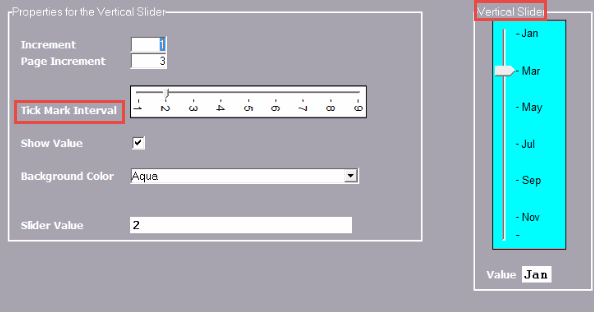
SCREEN FUNCTION DYNAMICS Sliders |

DEVELOPER |
 |
Sliders help you to design a rich user interface for your applications. Sliders allow you to select a value from a pre-defined list. It is a control with a thumb that can be moved up and down (vertical slider) or right and left (horizontal slider) with arrow keys, page up and page down keys, or use the mouse to click on the scale to move the thumb or slide the thumb. Use a Slider control when you want to set defined, contiguous values (such as volume or brightness) or a range of discrete values (such as screen resolution settings).
A slider is a good choice when you have the value as a relative quantity, not a numeric value. For example, users think about setting their audio volume to low or medium not about setting the values from 1 to 5.
The Sliders are available in both PROIV Open Client and MFC. However, the rendition is different in Open Client and MFC. You can customise sliders with more rendition properties in Open Client when compared to MFC.
You can customize the sliders with a large number of properties to enhance the look and feel and apply CSS styles. You can configure the logic at design time so as to allow changing the property values at runtime.
The three elements which control the slider’s design and runtime behavior are rendition, data and events. The slider at runtime appears based on the settings such as Rendition (for example, Slider border width and height), Data (retrieved from the associated selection cycle file or a range of values) and Events.
The tick marks can visually guide the available positions of the thumb.
Topic ID: 500697










